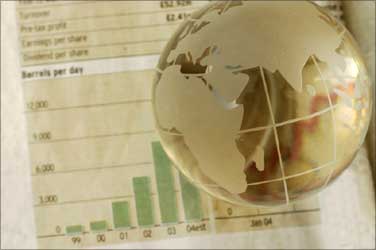
With the population of high net worth individuals showing a robust growth of 33.2 per cent in the Asia-Pacific region in 2009, India and China are likely to remain the fastest-growing HNWI segment in the world, a Merrill Lynch Global Wealth Management and Capgemini report said.
Emerging Asia (China, India, Indonesia and Thailand) is fast becoming the main engine of growth in the Asia-Pacific region and its HNWI segment showed a robust growth of 33.2 per cent in 2009, with wealth up 40.4 per cent, according to the 2010 Asia-Pacific Wealth Report.
India and China were the only two major Asia-Pacific countries in which industrial production actually rose in 2009, as they enjoyed a more diversified export market and broader domestic demand.
"China and India will lead the way in the Asia-Pacific region with economic expansion and HNWI growth is likely to keep out-pacing more developed economics," Merrill Lynch Wealth Management, India, chairman, Pradeep Dokania said.
Click on NEXT to know more about the top 10 nations . . .

Rank 1: Japan
Total wealth of HNIs: $3,892 billion
Japan is by far the largest single HNWI market in Asia-Pacific. Alone it accounted for 54.6 per cent of the Asia-Pacific HNWI population and 40.3 per cent of its wealth at the end of 2009.
However, growth in Japan's HNWI segment was modest compared with other markets in the region, due to the slowdown in Japan's macroeconomic growth and the relatively weak performance of its stock markets.
Japan's equity-market capitalisation rose just 6.1 per cent in 2009 compared with an average of 87.9 per cent across other Asian markets.
The HNWI population grew 20.8 per cent to 1.7 million and wealth rose 22.4 per cent to $3.9 trillion ($3,892 billion).
. . .

Rank 2: China
Total wealth of HNIs: $2,347 billion
China remained the second-largest HNWI base in the region, with 477,000 HNWIs, up 31 per cent from the
previous year.
Stock-market capitalisation in China soared more than 100 per cent in 2009, as the economy grew at a rapid 8.6 per cent pace.
China's rapid GDP growth is expected to slow a little to 8.3 per cent in 2011.
. . .
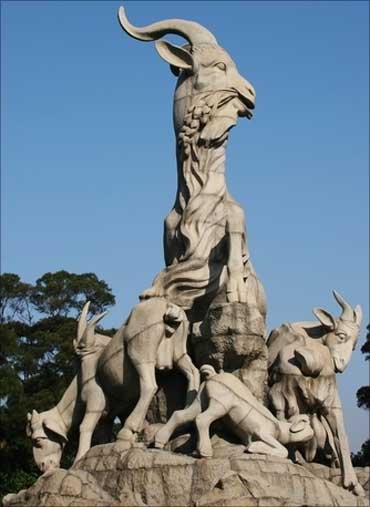
Going forward, China is expected to focus on balancing its economy by boosting the service sector and driving private consumption.
Emerging Asia was the primary driver of growth, with the standouts being China and India, where real GDP grew 8.6 per cent and 6.8 per cent respectively.
In China itself, housing prices and sales got a direct boost from government action to reverse many of the policies (e.g., on taxation and lending) that it had used to restrain the market when it was overheating in 2007.
. . .
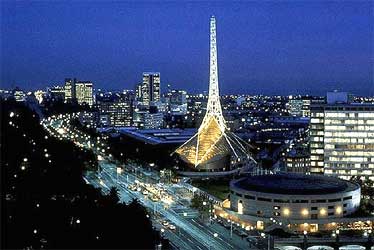
Rank 3: Australia
Total wealth of HNIs: $519 billion
Australia, which still has the third-largest HNWI population among Asia-Pacific markets, bounced back in 2009.
Movement in and out of the HNWI category is relatively frequent in Australia, where 91.1 per cent of all HNWIs are in the lowest ($1 million - $5 million) wealth band.
. . .
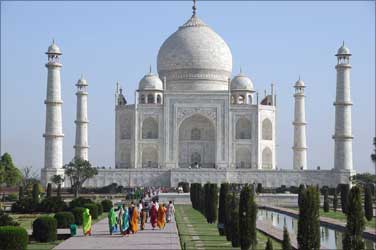
Rank 4: India
Total wealth of HNIs: $477 billion
In India, the HNWI population and its wealth grew 50.9 per cent and 53.8 per cent, respectively, in 2009, more than
recouping the losses of 2008, with resurgent stocks helping to drive the recovery.
India's stock-market capitalisation more than doubled in 2009 after dropping 64.1 per cent in 2008.
HNWI wealth was also driven in India by the strength in the underlying economy, which grew 6.8 per cent in 2009.
In India, the HNWI population and its wealth fully recovered to pre-crisis levels.
. . .
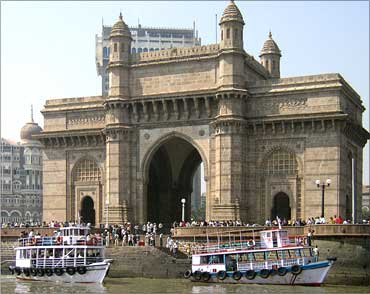
The central banks of China and India were net buyers of gold in 2009 after decades of selling.
Jewellery demand from India was up 27 per cent from a year earlier in Q4 2009 at 137.8 metric tonnes.
India's growth is expected to keep accelerating with GDP forecast to expand 8.1 per cent in 2011 after a gain of 7.8 per cent in 2010 due to the significant expansion of private consumption and investment, the report said.
The report said the Reserve Bank of India is expected to tighten monetary policy progressively in 2010 to make sure its economy does not overheat as the global financial crises recedes.
. . .
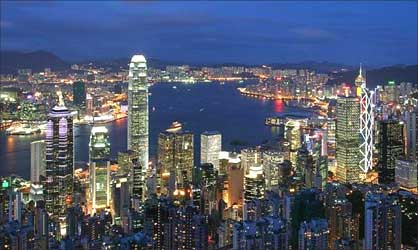
Rank 5: Hong Kong
Total wealth of HNIs: $379 billion
Hong Kong Saw Strong Gains but could not recoup the Record Losses of 2008.
The HNWI populations of Hong Kong and India experienced the strongest growth in numbers and wealth in the world in 2009, but those gains had followed the world's largest declines in 2008.
Hong Kong's HNWI recovery in 2009 followed significant gains in the key market drivers of wealth, particularly equities and real estate.
. . .
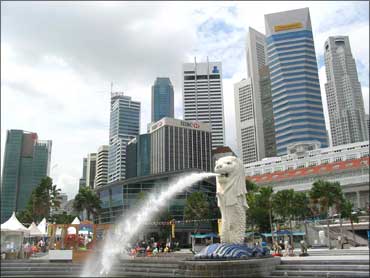
Rank 6: Singapore
Total wealth of HNIs: $369 billion
The Dow Jones global Select ReIT (real estate investment trust) Index ended the year with total returns of 32.2 per cent, with Singapore emerging as the region's top performer with a gain of 83.7 per cent.
Asia-Pacific real estate (commercial and residential) is expected to show sustained growth in 2010 in a revival of demand.
. . .

Rank 7: South Korea
Total wealth of HNIs: $340 billion
Many Asia-Pacific countries joined the global stimulus drive in 2009, seeking to refuel their economies.
The South Korean government implemented stimulus amounting to about 3 per cent of GDP as it sought to sustain the country's recovery.
. . .

Rank 8: Taiwan
Total wealth of HNIs: $264 billion
Taiwan's HNWI population also showed one of the sharpest growth rates in the region (42.3 per cent) after Taiwan
Stock Exchange capitalisation jumped 84.5 per cent.
. . .
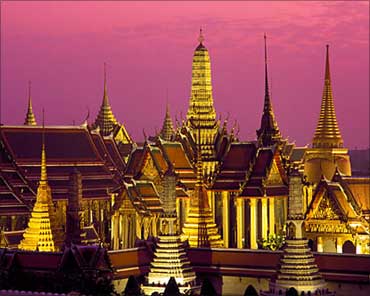
Rank 9: Thailand
Total wealth of HNIs: $232 billion
If global economic activity shows further signs of accelerating in 2010, some emerging-market governments are likely to plan a gradual withdrawal of both fiscal and monetary stimulus.
However, they will remain cognizant that rapid credit expansion can create asset-price bubbles and overheat economies.
Indeed, large capital inflows raised alarms during the first half of 2010 in some countries about the potential for asset bubbles.
However, with a moderate slowdown expected in Asia-Pacific and world economic recovery, these inflows are likely to slow.
. . .
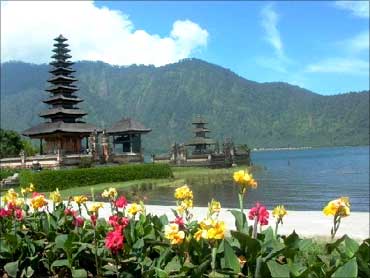
Rank 10: Indonesia
Total wealth of HNIs: $80 billion
In 2009, national savings14 as a percentage of GDP dipped to 38.3 per cent from 38.5 per cent in Asia-Pacific excluding Japan, driven by increased government expenditures tied to the fiscal-stimulus measures implemented to stave off damage from the economic crisis.
. . .
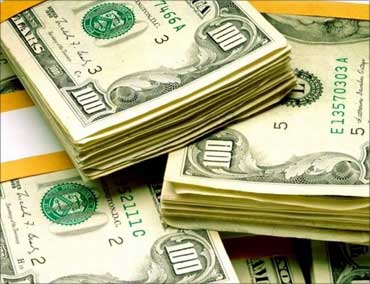
Total wealth of HNIs in 'other markets'*: $749 billion
The top three markets - Japan, China and Australia - accounted for 76.1 per cent of the Asia-Pacific HNWI population and 70 per cent of its wealth in 2009.
Japan and China together accounted for 70.4 per cent of total Asia-Pacific HNWI population and 64.6 per cent of its wealth at the end of 2009, up from 51.8 per cent and 62.8 per cent respectively a year before.
* Other markets include Kazakhstan, Malaysia, Myanmar, New Zealand, Pakistan, the Philippines, Sri Lanka and Vietnam.